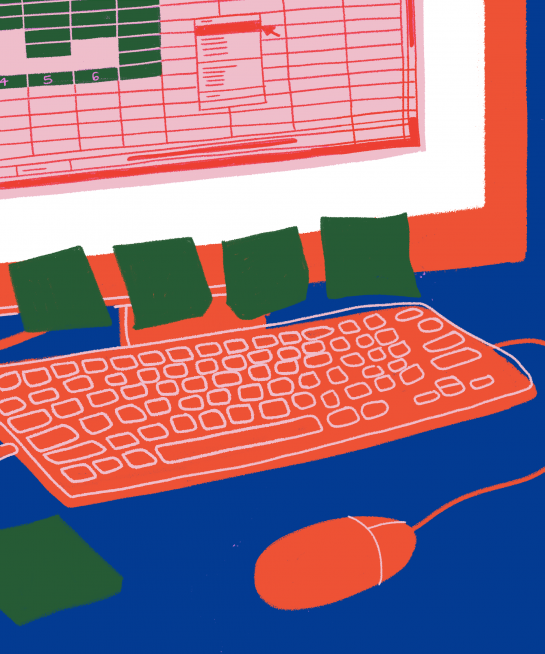The gig economy is alive and well. In fact, this modern online phenomenon has only…
Striking the Work-Life Balance: Nine Ways to Succeed
We all know how it feels to be burnt out. We juggle too much and wind up feeling like we’re not doing anything well, at work or home. It seems there’s always a marketing campaign demanding our attention or a new client to pitch.
It’s sad to say, but 94% of working professionals reported working more than 50 hours per week and nearly half said they worked more than 65 hours per week, according to a 2009 Harvard Business School survey. Numerous other studies show that overwork and stress can lead to health problems (depression, diabetes, heart disease) and work issues (absenteeism, turnover, and employee dissatisfaction).
Sometimes the overload can’t be helped in the case of a big deadline or family emergency. But as the holidays approach, it’s going to be more important than ever for you and your staff to strike that elusive work-life balance as often as you can.
Taking care of your work and yourself is important for you and your relationships, and also your clients. They’ll pick up on an agency that stretches its staff too thin and doesn’t appreciate the value of keeping people happy and healthy—not to mention refreshed and creative.

Nine Ways to Help You Succeed:
Stay Organized – Plan a do-able (not ideal) schedule in advance. Before you stop work for the day, review what needs to be done the next day. Keep your workspace organized, too, so that you don’t waste time trying to find valuable contact information or records in messy files, virtual or otherwise.
Put similar tasks together (checking emails, client phone calls), and build in uninterrupted blocks of time that allow you to catch up on loose ends. That time can also provide the creative space to let your mind wander and brainstorm new ideas. It’s far easier (and more efficient) to adhere to a plan than to wing it day after day.
Prioritize Goals and Tasks – Identify what’s most important to you in life and work, both now and for the future. Focus on the things and people that matter the most first, and create firewalls in your schedule to ensure they are protected and given quality time. Take care of the top items first in your most productive hours, then reprioritize what needs to be accomplished next. Some things may be one-off events while others are recurring priorities.
Delegate or Outsource – Trust your staff, and talk to them about pitching in on projects or shifting roles in ways that encourage their work-life balance and accomplish your goals.

Think about ways to lighten your personal load too, by outsourcing tasks. The gig economy has made it easier than ever to take packages to the post office or make a coffee run in time for a meeting. You may also want to consider other services, including:
- Rinse will pick up your dry cleaning and laundry in personalized bags and clean and deliver it back to your door. (Check out Wash Fairies, if you’re in suburban Chicago.)
- Meal prep kits include Blue Apron, Home Chef, Freshly, Sun Basket, Green Chef, HelloFresh, and Meez Meals.
- Nordstrom’s personal stylists can give you fashion and beauty advice while its “gift scouts” take care of your holiday shopping and wrapping needs. In Chicago, Kate Shifrin (kate@kateshifrinstyleconsultants.com) provides both personal styling and interior design services.
- Use an app like Zirtual or TaskRabbit to get things done, whether it’s booking office support, travel, a hair appointment, finding an exercise class, or scheduling repairs.
Take A Break – Whether it’s doing yoga, going on a 5-minute walk, or working out of a coffeehouse for an hour, it’s important to exercise and take other kinds of breaks from your routine during the workday.
A 2011 study in the journal Cognition showed that even brief diversions can dramatically improve our ability to focus on a task for prolonged periods. Studies also show that North American workers who take a lunch break every day have higher job satisfaction and are more likely to recommend their employer to others. In fact, 16 percent of millennials surveyed said they would take a 10 percent cut in salary for a daily lunch break.
Learn to Unplug – Turn off notifications and sounds on your phone and other devices. Try work methods like the 52/17 rule, or the 90/20 method, that break up tasks. And use productivity software like Gmail’s Priority Inbox to more effectively manage your email or Inbox When Ready to focus and hide your inbox temporarily.
Be Picky – Choose clients who respect your boundaries. Not every prospect is a good fit, especially if it means you and your staff are running yourselves ragged and around-the-clock. It’s better to have the right clients than the most clients.

Choose Excellence Over Perfection – Do your best, and don’t try to achieve the unattainable. That only puts stress on you and your staff, and sets everyone up for failure. Learn from your mistakes, celebrate the victories, and appreciate the power of resilience.
Walk the Walk – Be a role model for your staff by instituting your own work-life balance measures and encouraging and making it possible for them to do the same. Introduce policies and procedures that provide flexibility, paid time off, and reasonable deadlines and expectations. Let them know that time off is time off, and it’s OK to have limited work communications after-hours or on vacation.
Get a Life – Look to a hobby, sport or family activity to refuel you and reset your priorities away from the office. Staying in touch with who you are helps you bring your best self to work and reminds you of the value of trying to strike the right balance, even if you don’t get it right every time.




